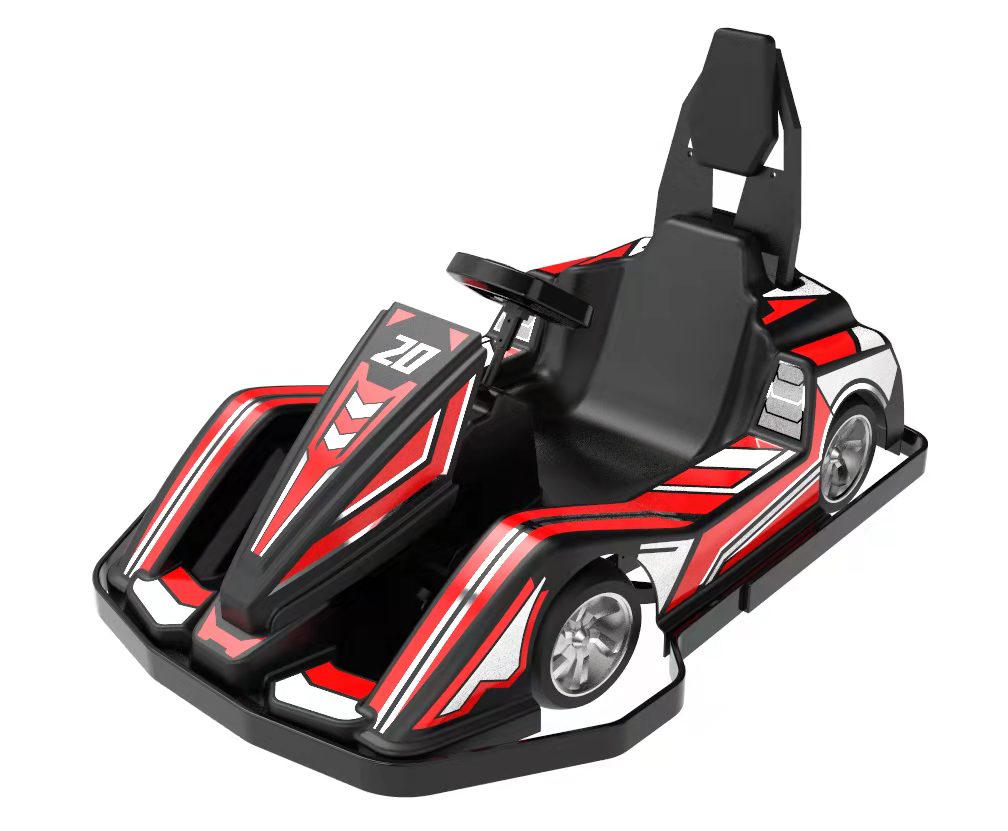Electric go-karts for kids are becoming more popular than ever before, with parents looking for fun and safe ways for their children to get outside and experience the thrill of driving.
But like any toy, electric go-karts have their pros and cons.
In this article, we’ll explore the advantages and disadvantages of electric go-karts for kids, and help you decide whether an electric go-kart is the right choice for your child.
What are Electric Go-Karts?
Electric go-karts are small, battery-powered vehicles that are designed to be used by children.
They are typically powered by an electric motor and can be controlled by a simple pedal or joystick.
Electric go-karts can be used indoors or outdoors, and are a fun and safe way for kids to learn how to drive.
Advantages of Electric Go-Karts for Kids
Safety
Electric go-karts are much safer than traditional go-karts, which are typically powered by gas engines.
Because electric go-karts don’t produce emissions or exhaust fumes, they can be used indoors or outdoors without the risk of carbon monoxide poisoning.
Electric go-karts are also generally designed to be slower and easier to control than traditional go-karts, which reduces the risk of accidents.
Eco-Friendly
Another advantage of electric go-karts is that they are environmentally friendly.
Unlike gas-powered go-karts, electric go-karts don’t produce harmful emissions, which means they are better for the environment.
This is an important consideration for many parents who are looking for toys that are both fun and sustainable.
Ease of Use
Electric go-karts are generally very easy to use, which makes them a great choice for kids who are just learning how to drive.
Most electric go-karts have simple controls, like a pedal or joystick, that make it easy for kids to control their speed and direction.
This can help kids build confidence and develop their motor skills.
Cost-Effective
Electric go-karts are generally more cost-effective than traditional gas-powered go-karts.
Because they don’t require gas, oil changes, or other maintenance, electric go-karts are much cheaper to operate. This can save parents a lot of money in the long run.
Good for Motor Skills Development
Electric go-karts can help kids develop their motor skills and hand-eye coordination.
By learning how to control their speed and direction, kids can improve their balance, agility, and reaction time.
This can be especially beneficial for younger children who are still developing these skills.
Fun and Exciting
Finally, electric go-karts are just plain fun! Kids love the thrill of driving and the feeling of freedom that comes with it.
Electric go-karts are a great way for kids to experience the joy of driving in a safe and controlled environment.

Disadvantages of Electric Go-Karts for Kids
Limited Battery Life
One of the biggest disadvantages of electric go-karts is their limited battery life. Most electric go-karts can only run for a few hours on a single charge,
which can be a problem for longer play sessions. This means that parents may need to charge the go-kart frequently, which can be inconvenient.
Not Suitable for Off-Road Use
Electric go-karts are generally not suitable for off-road use. They are designed for use on flat, smooth surfaces, like driveways or sidewalks.
This means that kids may not be able to take their go-karts to the park or other rough terrain.
Limited Speed and Power
Another disadvantage of electric go-karts is their limited speed and power.
Electric go-karts are generally slower and less powerful than gas-powered go-karts, which means that they may not be as exciting for older or more experienced drivers.
Risk of Accidents
Even though electric go-karts are generally safer than gas-powered go-karts, there is still a risk of accidents.
Kids can still crash or collide with other objects, which can lead to injury.
It’s important for parents to supervise their children and make sure they are following the rules of the road.

Conclusion
Electric go-karts for kids are a fun and safe way for kids to learn how to drive.
They have many advantages, including safety, eco-friendliness, ease of use, and cost-effectiveness. However, they also have some disadvantages, like limited battery life, limited speed and power, and a risk of accidents.
Ultimately, whether an electric go-kart is the right choice for your child depends on their age, skill level, and personal preferences.
FAQs
How old do kids need to be to use an electric go-kart?
Electric go-karts are generally designed for kids between the ages of 5 and 12, although this can vary depending on the specific model.
Are electric go-karts easy to assemble?
Yes, most electric go-karts come with easy-to-follow instructions and can be assembled quickly and easily.
Can electric go-karts be used in the rain?
It’s generally not recommended to use electric go-karts in wet conditions, as this can damage the electrical components.
How fast do electric go-karts go?
Electric go-karts typically have a top speed of around 5-10 miles per hour.
Are electric go-karts more expensive than gas-powered go-karts?
Electric go-karts can be more expensive upfront, but they are generally cheaper to operate in the long run, as they don’t require gas or oil changes.



